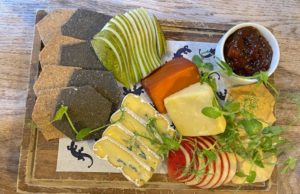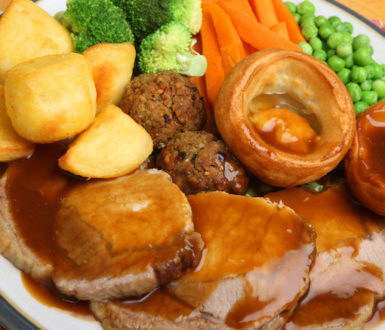
Think of British cheese and you probably think of Cheddar. This hard cheese is found across the world. But there’s more to Cheddar than the common mass-produced stuff, and there is more to British cheese than Cheddar. In fact, there are over 700 British cheeses which makes it one of the world’s biggest cheese nations!
Cheese has been made in the UK for thousands of years, although recipes and methods have changed a lot in that time. Many of our most famous cheeses (including Cheddar and Stilton) are only a couple of hundred years old.
First, a bit explaining what cheese actually is. It is made using the solids found in milk, which means a huge amount of milk is needed for even a small amount of cheese. Although sheep and dairy cows are found in most areas, cheese was traditionally only made in regions which were able to produce more milk than needed for everyday use. These were usually on the wetter, western side of Britain where the grass grows lush and long (for example Wales, Lancashire, Cheshire and Somerset).
In the early 1900s, it was said there were over 3,500 local cheesemakers. By the end of World War 2, there were only 100. A proud history of cheesemaking had been reduced to mainly the factory-produced ‘Cheddar’-type block that we have become known for. Even today, in supermarkets you’ll only find a few British cheeses: Cheddar of course, plus Wensleydale, Caerphilly, Stilton, Double Gloucester and perhaps a Somerset Brie.
This hides the fact that in the last 40 years, there has been a growing interest in cheese. Artisanal cheesemakers have recreated old recipes or developed delicious new cheeses with cow, goat or sheep milk. Some are British versions of European cheeses, some are completely unique. Artisanal cheeses are often only found in the region where they are made, but others are available more widely.
If you can’t find exciting cheeses locally, it’s the perfect excuse to explore the country – in cheese! Try local markets, delicatessens, butchers or farm shops. You can also find regional cheese in Waitrose supermarkets or through cheese specialists like Neal’s Yard Dairy, Paxton & Whitfield and The Courtyard Dairy.
Look out for:
- Westcombe cheddar: raw milk cheddar (very different to the mass-produced type)
- Stinking Bishop: semi-soft cheese made from the milk of Gloucester breed cows and washed in pear cider
- Cobbler’s Nibble: crumbly cow’s milk cheese made in Northamptonshire
- Crookwheel: hard cheese made from the milk of sheep that feed on Cumbrian marshes
- Harbourne Blue: a soft goat’s cheese with veins of blue mould
- Coverdale: tangy, firm unpasteurised cow’s cheese with a soft mould rind



